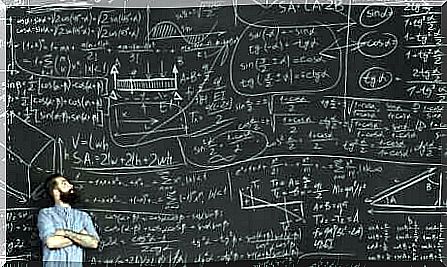Bayes’ Theorem

Bayes’ theorem is one of the pillars of probability. This is a theory put forward by Thomas Bayes (1702-1761) in the 18th century. But what exactly did the scientist try to explain?
According to the Royal Spanish Academy, probability expresses, in a random process, the ratio between the number of favorable cases and the number of possible cases. Many theories have been developed around the probabilities that govern us today.
When we go to the doctor, the doctor prescribes what is most likely to suit us. Advertisers focus their campaigns on the people most likely to buy the product they want to promote. We choose the route that is most likely to take us the least time.
One of the most famous laws of probability is the law of total probability. To understand it, let’s take an example.

Let’s say that in a given country, 39% of the population is made up of women. We also know that 22% of women and 14% of men are unemployed. So what is the probability (P) that a randomly selected person from the labor force in this country is unemployed? According to probability theory, the data would be expressed as follows:
- The probability that the person is female: P (F)
- The probability that the person is a man: P (H)
Knowing that 39% of the population is female, then we deduce that: P (F) = 0.39. So, we understand: P (H) = 1 – 0.39 = 0.61. The money problem also gives us the conditional probabilities:
- Probability that a person is unemployed, knowing that he is a woman -> P (P | F) = 0.22.
- Probability that a person is unemployed, knowing that he is male – P (P | H) = 0.14
Using the law of total probability, we get:
P (P) = P (F) P (P | F) + P (H) P (P | H)
P (P) = 0.22 × 0.39 + 0.14 × 0.61
P (P) = 0.17
Thus, the probability that a randomly chosen person is unemployed is 0.17. We can see that the result is between the two conditional probabilities (0.22 <0.17 <0.14). In addition, it is closer to men, because in the population of this invented country, they are in the majority.
Bayes’ theorem
Suppose now that an adult person is chosen at random to fill out a form and it is found that they do not have a job. In this case, and given the previous example, what is the probability that this randomly chosen person is a woman -P (F | P) -?
To solve this problem, we will apply Bayes’ theorem. This theorem is used to calculate the probability of an event by having prior information about this event.
We can calculate the probability of an event A, also knowing that this event A has a certain characteristic (B) which conditions its probability. In this case, we are talking about the probability that the person randomly chosen to fill out a form is female.
But in addition, this probability will not be independent of whether the selected person is unemployed or not. So what is the formula of this theorem *
The formula of Bayes’ theorem
Like any other theorem, to calculate the probability, we need a formula. The formula is defined as follows :
It sounds complicated, but everything has an explanation. Let’s take it step by step. What does each letter mean?
- To begin with, B is the event about which we have previous information.
- On the other hand, the letter A (n) designates the various conditional events.
- In the numerator part, we have the conditional probability. This is the probability that something (event A) will happen, knowing that another event (B) is also happening. It is defined as P (A | B) and is expressed as follows: The probability of A given B.
- In the denominator, we have the equivalent of P (B). See the previous section.

An example
Thus, to return to the previous example, suppose that an adult is chosen at random to complete a questionnaire and that he is observed to be unemployed. What will be the probability that this chosen person will be a woman?
Taking into account the previous example, we know that 39% of the working population are women. So we know that the others are men. In addition, we know that the percentage of unemployed women is 22% and that of men is 14%.
Finally, we also know that the probability that a randomly chosen person is unemployed is 0.17. Then, if we apply the formula of Bayes’ theorem, the result that we will get is that there is a probability of 0.5 that a person chosen at random, among all those who are unemployed, is a woman.
Let’s conclude this article on probability with a hint of one of the most common confusions in probability. This oscillates between 1 and 0, without ever going beyond these margins; 1 being the probability of a certain event and 0 the probability of an impossible event.









